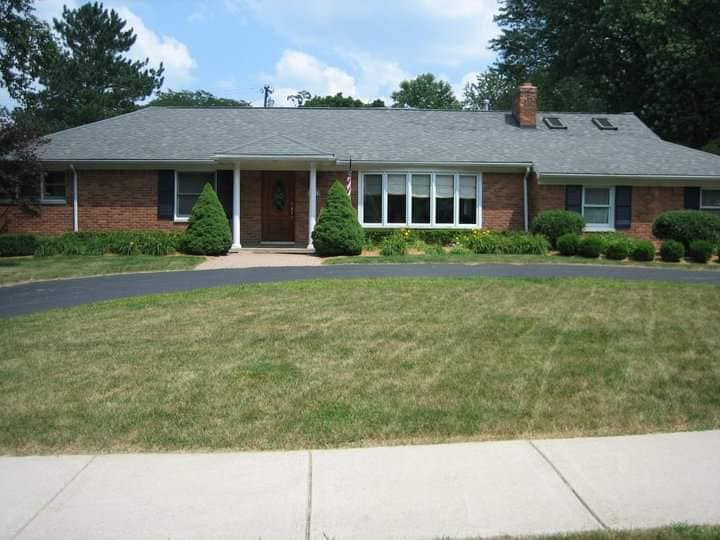
We bought our home on a half-acre lot in Bloomfield Township, Michigan in May of 2010. The yard was a boring canvass of turf grass. Fortunately, the back yard had several different species of pine trees planted along the property line and a couple of big, mature silver maple trees along one side. The landscaping was minimal; just day lilies and evergreen shrubs.
First, we replaced the grass in the middle of the circle with native nanny bush, serviceberry, nine bark, and pagoda dogwood, purchased from a local native plants nursery. Over the next nine years, we added red osier dogwood, a crab apple tree, a red maple, river birch, butterfly weed, and common milkweed. We also overhauled all the front flower beds with a focus on native perennials like coneflower, black-eyed Susan, false sunflower, tickseed and butterfly weed. Chickadees, robins, goldfinches, nuthatches and blue jays now forage in the front yard. Cedar Waxwings feast on ripe serviceberries. The front yard also attracts Eastern Phoebes and Black-throated Green and Yellow Warblers during migration. Chipping sparrows have nested in the pagoda dogwood tree since 2020.
Along the way, we installed a pollinator garden with many species of native flowers in the back yard, including false sunflowers, asters, goldenrods, bee balm, spotted bee balm, cup plant, compass plant, rattlesnake master, snakeroot, ironweed, and Joe Pye weed. We included little blue stem, prairie drop seed, and purple love grass. This fall we planted spikenard and foam flower. The increase in insects has been incredible! We now attract so many bees, wasps, and butterflies that we struggle to identify them all. A third of our backyard is a vegetable garden, with a cedar fence to keep out deer, woodchucks and rabbits. We planted more butterfly weed and common milkweed along the fence.
We spaced three bird baths and five nest boxes around the yard. House Wrens have nested in one nest box for the last seven years. Three years ago, we had our first nesting Gray Catbird pair and this summer, Eastern Kingbirds hawked for insects from our utility wires and a Northern Flicker pair nested in a cavity in our paper birch tree. Baltimore Orioles hunt for worms in the silver maples.
We have enjoyed the process of converting our yard to habitat and then enjoying the birds and insects supported by the results.
Nick served as a board member in the early days of our organization.